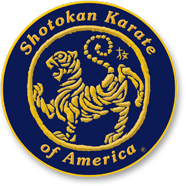Practice Karate-Do!
We are so glad that you are interested
in training with Portland Shotokan Karate Dojo.
If you want to practice traditional martial arts, learn self-defense, or just get healthier, come check us out! We welcome both beginners and those with martial arts experience to attend.
Classes:
Mon/Wed – 6:30-8:00pm
Sat – 9:30-11:00am
Classes are $15/class or $45/month. We also encourage you to join Shotokan Karate of America.
Benefits of Karate
Karate can be practiced by everyone at any age for self-defense, to strengthen the entire body, improve balance, efficiency of movement, breathing and overall health. No special equipment is needed.
Karate helps to strengthen the mind, develop courage, fortitude, and the ability to achieve goals.
Karate practice emphasizes spiritual values of courtesy, integrity, humility, justice, honor, and self-control.
The study of karate benefits the student in all areas of their life.
About Portland Shotokan
Our dojo started in 1997. Our dojo leader is Stuart Iwasaki who is a third degree black belt student of Tsutomu Ohshima, founder of Shotokan Karate of America.
Our members enjoy a direct link to ancient masters of martial arts through Mr. Ohshima and his direct instructor, Gichin Funakoshi, founder of Shotokan Karate.
If you are looking for an authentic, challenging martial art with deep cultural roots and passionate, dedicated practitioners, come try us out!
“To win one hundred victories in one hundred battles is not the highest skill.
To subdue the enemy without fighting is the highest skill.”
– Master Gichin Funakoshi
